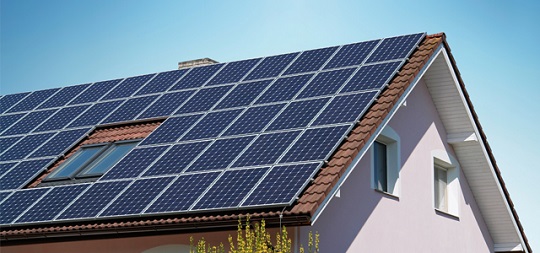
Instantaneous self-consumption consists in generating electrical energy oneself and consuming it at the same time.
This particular form of electricity generation is increasing significantly despite current laws in some countries such as Spain, because it is precisely this form of electricity generation that makes it possible to authorise generation installations as any type of electrical installation. This simplifies and reduces the cost of managing photovoltaic installation to the authorities, making it equivalent in legislation terms to a diesel generator.

This simplification means that more and more consumers and autonomous regions in Spain are becoming interested in instantaneous self-consumption as an alternative, efficient and cheaper energy source.
Under Spanish law our photovoltaic installation must meet three requirements:
• It must not inject electricity generated into the electrical distribution lines,
• It must comply with European ЁАanti-islandingЁБ regulations that do not allow a stand-alone generator to supply electricity if there is no supply from the electrical distribution lines.
• It must comply with current safety standards
Therefore, the most important factor is complying with the provision of not injecting into the distribution lines and the ЁАanti-islandingЁБ regulations, both of which are achieved thanks to CIRCUTOR's Dynamic Power Control (CDP) kits.

Dynamic Power Control kits (CDP) for self-consumption
In Spain an increasing number of private and industrial consumers are turning to instantaneous photovoltaic energy self-consumption because solar photovoltaic energy is more competitive in the long term. In fact, the same traditional utilities are offering these types of installations to their customers, particularly industry.
In developing countries or isolated consumers, instantaneous self-consumption is also proving interesting because:
• Energy is expensive,
• Supply is often poor in quality,
• Electricity supply is difficult to access,
• There is an increasing demand for electrical energy.
In these environments it is possible to create micro-networks at competitive prices that do not depend on major infrastructures or large companies. Diesel oil is a common solution in these cases, but quite often it is not possible to access the place of consumption, running the risk of not having any electric supply if there is any delay in sending the diesel oil.
There are presently actual examples of instantaneous self-consumption where, thanks to the generation and self-consumption of photovoltaic electrical energy, customers are gaining a return on their investment and achieving significant savings.
For example there is a small hotel and restaurant in Sant Cugat (Barcelona), which wants to take advantage of photovoltaic self-consumption.
Annually it consumes 241,731 kWh of power, but due to the small surface area available for the photovoltaic panels, it could only self generate 20,149 kWh a year, 8% of the total amount. Despite this, the customer recouped their investment after ten years, with a total forecast saving of 65,176.35 after twenty-five years.

Despite having a reduced surface area for photovoltaic panels, the customer was able to save 8% of the energy they needed.
The above graphic shows the electrical consumption of the electrical network, with photovoltaic energy self-consumption marked in green. It must be ensured that no electricity is injected into the electrical network at any time.
The current legislative framework on instantaneous self-consumption installations enables a return on investments over a reasonable period of time and a cheaper and efficient electric supply. For this, current regulations must be observed, with the carrying out of a suitable technical study. Whenever the traditional financial market is not receptive, financing through similar companies is viable and very useful.

BaoGang Road, No.263(510240)
HaiZhu District (GuangZhou) CHINA
Tel: (+86) 020-84395068
Fax: (+86) 020-84390828
E-mail: Sales@circutor-cn.com

АцШЈЫљгаЃКШјПЦЬиЕчЦј дСICPБИ16000179КХ